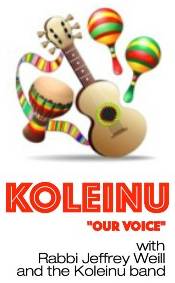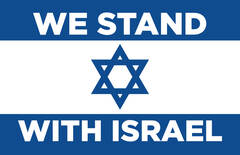- About
- Blogs
- Community
- Events
- Learn
-
Photo Gallery
- Rabbi Weill's 60th Birthday
- Purim Shpiel 2025 Pics
- Purim 2025 Pics
- HH 5785 / 2024 Pics
- Magen David Odam Ambulance Dedication Photos (2024)
-
PAST PURIM SPIELS
- Purim Shpiel 2024 - Ghosts of Purim
- Purim Spiel 2022: Shushan Incorporated (26 photos)
- Purim Spiel 2019: Young Esther Stein (12 photos)
- Purim Spiel 2018: Saving Mordecai (Rehearsal) (81 photos)
- Purim Shpiel 2017: Bye Bye Haman (189 photos)
- Purim Shpiel 2017: Bye Bye Haman (Rehearsal)
- Purim Shpiel 2016: The Queen and I (Rehearsal) (124 photos)
- Purim Shpiel 2015: Li'l Orphan Esther (87 photos)
- Purim Shpiel 2015: Li'l Orphan Esther (Rehearsal) (18 photos)
- Purim Shpiel 2014: PurimTime (70 photos)
- Purim Shpiel 2013: The Book of Esther (27 photos)
- Purim Shpiel 2012: The Trial of Haman (3 photos)
- Purim Shpiel 2011: The Megillah – A Shlock Opera (16 photos)
- Purim Shpiel 2010: The Megillah – A Thrilla' (14 photos)
- Folk and Rock Revue June 2019 (18 photos)
- Sisterhood 2018 Luncheon and Fashion Show (24 photos)
- Sisterhood Ron Balson Author Luncheon (19 photos)
- Sisterhood Chanukah Luncheon (9 photos)
- Kristallnacht 75th Anniversary (13 photos)
- Martin & Henrietta Fox Torah Project (23 photos)
- Sukkah Decorating 2015 (4 photos)
- Resources
- Support
- Worship
History of Ezra-Habonim
History ofCongregation Ezra-Habonim
The history of Congregation Ezra-Habonim starts with the arrival of refugees of Nazi persecution, young and old, who came to Chicago from Germany and Austria in the mid 1930’s and followed by Holocaust survivors who arrived from Europe, Australia, China, Cuba and Latin America after World War II. They started congregations in Hyde Park and Lake View in 1936.
HYDE PARK AND LATER SOUTH SHORE
1. The Jewish Center
A group of young men and women met in the spring of 1936 for a community Seder in a room provided by K.A.M. Temple in Hyde Park. That summer they organized themselves as the Jewish Center and negotiated with Sinai Temple to conduct there a separate service for the High Holy Days. Liberal services in the German tradition were led by Rabbi Herman Schaalman. After that, the Center instituted monthly Friday night and Festival services and Sunday afternoon socials, which featured Jewish cultural programs. By 1938-39, the Center reached an all-time high membership of approximately 1600 persons. In 1939, Dr. Fritz Bamberger was elected Rabbi of the Congregation.
2. The Friday Evening Congregation
Another group of unaffiliated newcomers formed Conservative Friday evening services in October, 1939. Rabbi Siegfried Weinberg, who was brought to Chicago by K.A.M. Temple, invited a small group of men to weekly Friday evening services. Women joined them shortly thereafter. A choir, under the direction of Mr. Max Janowski, was added. In 1942, a Youth Group was established and two Hebrew classes were begun. In December 1944, the congregation moved to its own home at 56th Street and Ellis Avenue. There, Saturday morning, Bar Mitzvah, and Festival services were introduced. The new synagogue was incorporated by the State of Illinois in 1945 under the new name of Habonim. Many members who were new citizens served in the armed forces. Some returned to Germany as United States soldiers. In 1945, merger talks were initiated with the Center.
3. Habonim Jewish Center
On January 6, 1946, the merger was accomplished. A new state charter was issued under the name Habonim Jewish Center. In August 1946, Rabbi Bernard Wechsberg of Denver, Colorado was appointed its spiritual leader. A Religious School was opened in 1946 for 16 students. A volunteer choir, under the direction of Mr. Max Janowski, continued until 1959, when a professional quartet was engaged. In 1948 the Bat Mitzvah ceremony and the Kristallnacht Memorial Service were added. A second home was established at 53rd Street and University Avenue. Groundbreaking ceremonies were held on March 21, 1948, and the synagogue was dedicated on November 7, 1948, ten years after Kristallnacht. Sunday school for 5 and 6 year-olds also opened in 1951. In 1955, Leopold Fleischer of San Francisco was appointed Chazzan. He succeeded Ludwig Rosenbusch and Mendell Lewkowitz. As many members moved from Hyde Park to South Shore, the synagogue building was sold in 1956. The synagogue moved temporarily to a former grocery store at 57th Street and Harper Avenue. On June 24, 1956, groundbreaking ceremonies took place at the new location of 76th Street and Phillips Avenue. The synagogue was dedicated on September 8, 1957. A Hebrew High School was established on Phillips Avenue. Rabbi Philip Rabinowitz, the first American born rabbi, succeeded Rabbi Wechsberg and was followed by Rabbi Naphtali Rubinger. Habonim joined the United Synagogue of America during the tenure of Rabbi Rabinowitz in 1960. In 1973, Congregation Habonim merged with Ezra Congregation.
There are seven current members who belonged to Habonim: Sigrid Cohen, Felice Eckhouse, Lee Fein, Joseph Leib, Henry Mosbacher, Kurt Tannenwald and Ralph Ruebner.
EZRA
A group of young men and women established a sports and social club on the north side in 1936, known as the Sport Center of Jewish Youth. In 1938, it evolved as the North Center of Jewish Youth. Friday evening services were added on November 10, 1938, coincidentally the day after the infamous Kristallnacht in Nazi Germany. It was held in the Sanctuary of Temple Emanuel, then on Buckingham Place. The Center rented facilities for religious services at 1026 Wilson Avenue, and for a while, at 3158 North Broadway Avenue. Religious services were occasionally held in the sanctuaries of Temple Emanuel, Lincoln Park Congregation, and Anshe Emet Synagogue.
In 1941, the name of the Center was changed to Jewish North Center. Efforts to form a congregation had to be postponed when America entered World War II in 1941, as many of the young members enlisted in the armed forces. Finally, in 1944, a resolution was adopted to change the name again, this time to Jewish North Center Congregation, and in 1946, the Congregation was incorporated under the laws of the State of Illinois. The growth of the congregation paralleled the social and economic improvement of its members.
Religious services were first conducted by volunteers. In 1940, Cantor Leopold Stern was engaged to conduct services. He chanted the prayers and at times gave sermons. He also assisted in establishing a religious school.
In 1946, the first full time Rabbi, Rabbi Davin Schoenberger, was engaged. Upon his suggestion, the Congregation’s name was changed to Temple Ezra.
In 1948, Temple Ezra acquired its first permanent location, a small building located on Aldine between Clark and Halsted. The growth of the Congregation and the size of its permanent home necessitated holding High Holy Day Services at larger rental facilities, mainly at the Masonic Lodge on Wilson Avenue and for many years at the People’s Church on Lawrence Avenue.
Rabbi Schoenberger remained until 1956. He was succeeded by Rabbi Joseph Liberles, who served until 1961. On March 17, 1957, Temple Ezra dedicated its second home at 5658 North Winthrop Avenue, a former Greek Orthodox Church building. It then engaged Rabbi Ira Sud as its new spiritual leader. In 1958, Cantor Zvi Ben-Shalom succeeded Cantor Stern. In 1961, Cantor Moses Schwimmer was appointed Hazzan. He served until 1976.
From the early beginnings, religious services were conducted in the conservative tradition and in 1962, after almost 25 years, Ezra joined the United Synagogue of America.
In 1967, the Congregation acquired the synagogue building from New Israel Synagogue at 2620 West Touhy and changed its name to Ezra Congregation in order to formally identify with the Conservative Movement. The dedication of the new synagogue took place on September 10, 1967. Eight current members have roots in Ezra Congregation: Dr. Fred Herzog, Gunther and Margot Marx, Margie Oppenheimer, Hans and Johanna Pinshower, Evie Ruebner and Carol Straus. Some New Israel families had joined Ezra and today two families, Aaron and Rochelle Dlugie and Fred and Lillian Sinay, are members of the Congregation.
EZRA-HABONIM
In the summer of 1973, Ezra and Habonim merged. Rabbi Ira Sud became the spiritual head of the newly merged Congregation. Rabbi Shlomo D. Levine was elected Rabbi in 1975, at which time Rabbi Sud assumed the position of Rabbi Emeritus. Rabbi Levine was followed by Rabbi Robert Rhodes in 1992. Rabbi Rhodes served until 1994. Rabbi Henry Balser was elected spiritual leader in 1995 and served until 2001. Rabbi Shlomo Levine returned to his home at Ezra-Habonim in 2001. Cantor Leopold Fleischer served as Associate Cantor and Cantor Emeritus until his death in 1995. In 1976, Cantor Henry Danziger succeeded Cantor Schwimmer. He was followed by Cantor Erik Goldberger in 1982, who served until 1987. Cantor Johanan Bickhardt was intermin cantor in 1988. Cantor Jerome Padorr followed for three years. Hazzan Toby Lou Hayman succeeded him in 1992 and served until 1993. Rich Moline has chanted the services since 1993. Under the leadership of Rabbi Levine, the synagogue’s presidents and boards of directors, Ezra-Habonim attracted new members from the community and nearby suburbs. This was the Americanization of the Congregation.
After the merger of Ezra and Habonim, a few younger families, who had moved into the northern suburbs, studied the feasibility of establishing a branch in Northbrook. In 1977, that branch became an independent sister congregation, still known as NorthbrookCongregation Ezra-Habonim.
On November 9, 1988, Ezra-Habonim commemorated the 50th Anniversary of Kristallnacht. The day-long event included an interfaith symposium, an outdoor candlelight vigil, followed by a memorial service and the world premiere performance of a cantata commissioned by the Congregation entitled, “KRISTALLNACHT”.
The Congregation remained at 2620 West Touhy Avenue until the summer of 1997. A segment of the Congregation merged with Niles Township Jewish Congregation and the building was sold. Those who remained members formed Congregation Ezra-Habonim, the Rogers Park Conservative Synagogue sharing the facilities of Temple Menorah. We remained there as an independent synagogue until our merger with Ner Tamid a year ago. We have dedicated our congregation as a memorial to the victims of Nazism and the Holocaust. We remained dedicated to the traditions of the past, but we have also opened our doors, our minds, and our hearts to new ideas, new traditions, and new friends.
Written by Dean Ralph Ruebner and Rose-Lynn Jaffe
Wed, November 19 2025
28 Cheshvan 5786
LOOKING FOR WAYS TO HELP ISRAEL? CLICK HERE
ALSO:
Brothers For Life – Injured soldiers helping injured soldiers
__________________________
"Unveiling Death"
Podcast by Rabbi Weill
![]() CHECK OUT THE LATEST EPISODE - Kaddish Without God: Death & Mourning in Humanistic Judaism: A Conversation with Rabbi Adam Chalom
CHECK OUT THE LATEST EPISODE - Kaddish Without God: Death & Mourning in Humanistic Judaism: A Conversation with Rabbi Adam Chalom
__________________________

Friday, November 7th
7:30 PM
In-Person & Zoom
__________________________
Our Worship Mishpachah
___________________
SHIRENU/OUR SONG
Join EHNTJC's Congregational Choir! We will sing at services and other special events. Led by Cantor Daniel Gale.
Please contact bill@ehnt.org if you are interested in joining.
__________________________










 Like Us On Facebook
Like Us On Facebook